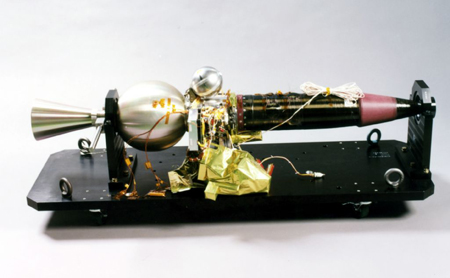About Lunar Exploration Satellite "LUNAR-A"

|
Japan’s first full-fledged lunar exploration satellite, LUNAR-A, will investigate the mysteries of the origins of the Moon.LUNAR-A, will conduct Japan’s first full-fledged lunar mission. When it comes to lunar exploration, most people think about the missions conducted by the United States and the former Soviet Union. But those countries conducted only geographical research, mainly targeting the configuration of the lunar surface and rocks. LUNAR-A will directly investigate the interior of the Moon, which could provide a lot of data on the Moon’s origin and evolution. |
|---|
Characteristics of Lunar Exploration Satellite "LUNAR-A"
Observation devices will separate from the probe and investigate the internal structure of the moon. The mother ship will photograph the lunar surface.
|
The Moon’s interior will be probed by a device called a penetrator. Penetrators are contained in a spear-shaped case, which is 80 cm long, with a diameter of 16 cm. LUNAR-A will release two penetrators, which will hit the lunar surface and penetrate to the depth of about two meters. The penetrators are equipped with seismometers and heat-flow probes, and will investigate the lunar interior for about one year. The LUNAR-A mother ship will orbit the Moon and gather information sent from the penetrators, while photographing the lunar surface with its camera. This camera will gather geographical information, and also technical information on optical navigation, which will make future exploration of the Moon much easier. |

|
|---|
Pamphlet
- Lunar Explorer LUNAR-A
 (1.8MB)
(1.8MB)